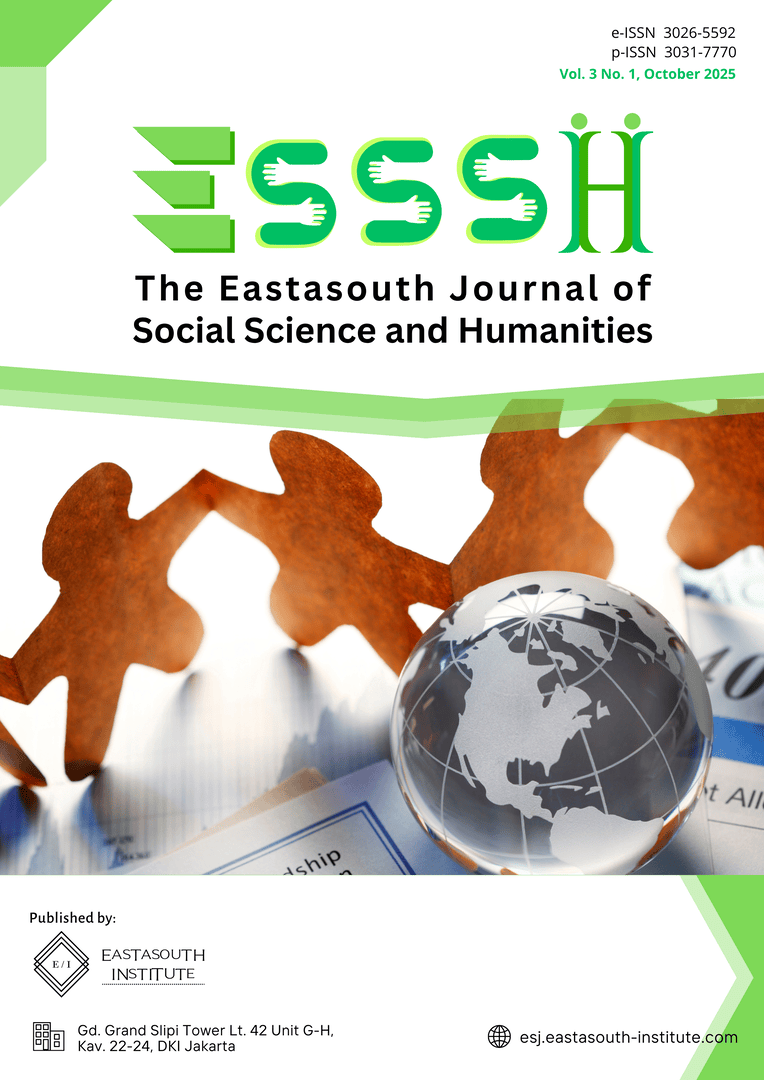Animals as Parables in the Qur'an in the Context of Human Behavior in the Modern Era
Main Article Content
Abstract
This study aims to examine animals used as parables in the Qur'an and their relevance to human behavior in the modern era. The method used is thematic interpretation by compiling verses containing animal metaphors, then analyzing their meanings and moral messages, and relating them to contemporary social phenomena. The results show that the Qur'an presents parables through various animals such as mosquitoes, dogs, livestock, flies, spiders, and donkeys. Each animal symbolizes human behavior, for example, dogs represent greedy and dissatisfied people, while spiders symbolize the fragility of relying on anything other than Allah. In the modern context, these parables can be linked to phenomena such as hedonism, moral decadence, consumerist lifestyles, the fragility of social media relationships, and the importance of productivity and discipline. Thus, this study confirms that animal parables in the Qur'an are not only relevant at the time of their revelation but also serve as a mirror for modern human behavior, as well as a reminder to make the Qur'an a guide for life that is relevant throughout the ages.
Article Details

This work is licensed under a Creative Commons Attribution-ShareAlike 4.0 International License.
References
M. Ali, “Fungsi perumpamaan dalam al-Qur’an,” Tarb. J. Ilm. Pendidik., vol. 10, no. 02, pp. 21–31, 2013.
H. Harjono et al., Hewan Dalam Perspektif Al-Qur’an dan Sains. Lajnah Pentashihan Mushaf Al-Qur’an, 2012.
Qur’an Kemenag, “Qur’an Kemenag.” https://quran.kemenag.go.id/quran/per-ayat/surah/29?from=1&to=69 (accessed Sep. 26, 2025).
M. C. Marom, “Perumpamaan Hewan Dalam Al-Quran Penafsiran M. Quraish Sihab Dalam Tafsir Al-Misbah,” STAI Al-Anwar Sarang Rembang, 2020, [Online]. Available: https://repo.staialanwar.ac.id/1653/
G. Arie Sadewa, “Hewan Sebagai Representasi Perilaku Manusia Dalam Lukisan,” Inst. Seni Indones. Yogyakarta, 2024.
S. E. Wijaya, “Pesan Moral Dalam Amtsal Al-Quran Pada Hewan (Studi Analisis Komparatif Tafsir al-Quthubi dan al-Misbah),” Univ. Islam Negeri Sultan Syarif Kasim Riau, 2020, [Online]. Available: https://repository.uin-suska.ac.id/27397/
M. F. Hasyim, F. Razi, and F. Abdulfatah, “Tabiat Manusia dalam al-Qur’an, Perumpamaan Lalat dan Tafsir Surah Al-Hajj Ayat 73 Ṭanṭāwī Jauharī,” Indones. J. Humanit. Soc. Sci., vol. 5, no. 2, pp. 729–748, 2024.
Qur’an Kemenag, “Qur’an Kemenag.” https://quran.kemenag.go.id/quran/per-ayat/surah/2?from=1&to=286 (accessed Sep. 26, 2025).
A. A. Salim, “Perumpamaan ‘Nyamuk’ di dalam Al-Qur’an:(Kajian Asbab Al-Nuzul Surah Al-Baqarah Ayat 26),” J. Asy-Syukriyyah, vol. 23, no. 2, pp. 203–216, 2022.
Qur’an Kemenag, “Qur’an Kemenag.” https://quran.kemenag.go.id/quran/per-ayat/surah/7?from=1&to=206 (accessed Sep. 26, 2025).
R. Bustamam, R. D. Rachmadi, and A. Hanif, “Anjing sebagai Tamtsil al-Qur’an dalam Tafsir al-Mishbah Karya M. Quraish Shihab,” Istinarah Ris. Keagamaan, Sos. dan Budaya, vol. 5, no. 1, pp. 1–19, 2023.
Qur’an Kemenag, “Qur’an Kemenag.” https://quran.kemenag.go.id/quran/per-ayat/surah/22?from=1&to=78 (accessed Sep. 26, 2025).
L. Hakim and F. Fatimatuzzuhra, “Menyingkap Makna Amtsal Laba-Laba Dalam Al-Qur’an,” TAFSE J. Qur’anic Stud., vol. 7, no. 1, p. 21, 2022.
Qur’an Kemenag, “Qur’an Kemenag.” https://quran.kemenag.go.id/quran/per-ayat/surah/62?from=1&to=11 (accessed Sep. 26, 2025).
R. Diani, “Perumpamaan Keledai Dalam Al-Qur’ān,” UIN Ar-Raniry Banda Aceh, 2019, [Online]. Available: https://repository.ar-raniry.ac.id/id/eprint/9680/

